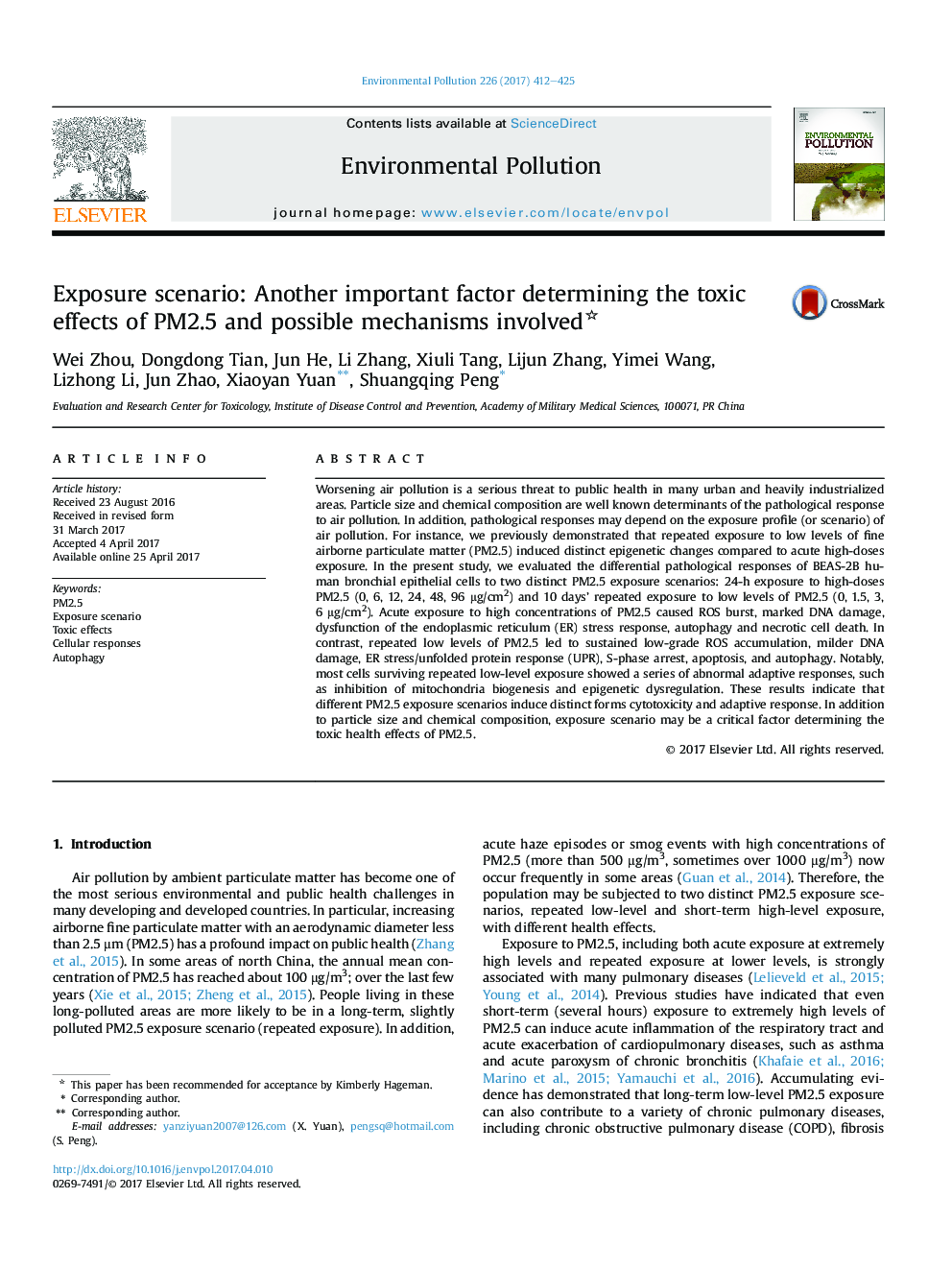| Article ID | Journal | Published Year | Pages | File Type |
|---|---|---|---|---|
| 5749104 | Environmental Pollution | 2017 | 14 Pages |
â¢The mode of exposure impacted the PM2.5-induced toxic effects and cellular responses.â¢Acute exposure to high dose of PM2.5 resulted in cellular metabolic dysfunction and necrosis.â¢Repeated exposure to low dose of PM2.5 led to the activation of survival pathways and cellular pathogenic adaptation.
Worsening air pollution is a serious threat to public health in many urban and heavily industrialized areas. Particle size and chemical composition are well known determinants of the pathological response to air pollution. In addition, pathological responses may depend on the exposure profile (or scenario) of air pollution. For instance, we previously demonstrated that repeated exposure to low levels of fine airborne particulate matter (PM2.5) induced distinct epigenetic changes compared to acute high-doses exposure. In the present study, we evaluated the differential pathological responses of BEAS-2B human bronchial epithelial cells to two distinct PM2.5 exposure scenarios: 24-h exposure to high-doses PM2.5 (0, 6, 12, 24, 48, 96 μg/cm2) and 10 days' repeated exposure to low levels of PM2.5 (0, 1.5, 3, 6 μg/cm2). Acute exposure to high concentrations of PM2.5 caused ROS burst, marked DNA damage, dysfunction of the endoplasmic reticulum (ER) stress response, autophagy and necrotic cell death. In contrast, repeated low levels of PM2.5 led to sustained low-grade ROS accumulation, milder DNA damage, ER stress/unfolded protein response (UPR), S-phase arrest, apoptosis, and autophagy. Notably, most cells surviving repeated low-level exposure showed a series of abnormal adaptive responses, such as inhibition of mitochondria biogenesis and epigenetic dysregulation. These results indicate that different PM2.5 exposure scenarios induce distinct forms cytotoxicity and adaptive response. In addition to particle size and chemical composition, exposure scenario may be a critical factor determining the toxic health effects of PM2.5.
Graphical abstractDownload high-res image (547KB)Download full-size image
